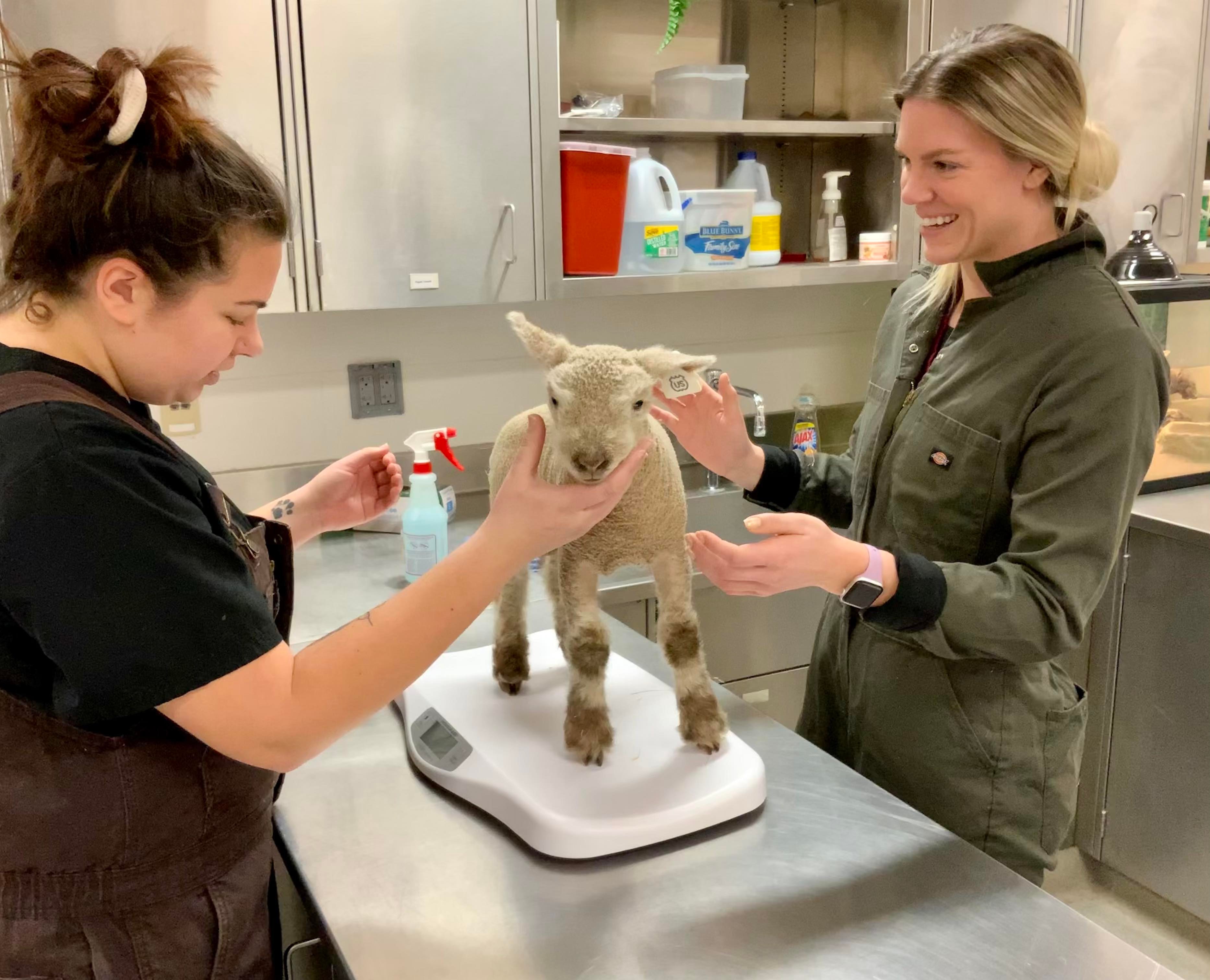Lambing offers vet techs new experience

By Mary Crawford, NCTA News
Thanks to newborns named Clover and Dandelion, veterinary technology students at NCTA got some unique, hands-on insight into lambing.
The twin males were born on separate dates to Honey, a Babydoll South Down ewe, owned by Leighlynn Obermiller, Veterinary Technology instructor and alumnus with the Nebraska College of Technical Agriculture in Curtis.
For a second year, Obermiller brought several pregnant ewes from her flock to campus. Elizabeth Fraser, DVM, incorporates lambing into the large animal courses and labs she teaches.
“The students take turns caring for the sheep and taking night watch for signs of lambs,” said Obermiller of the project. “When the final ewe lambed, I had a whole group of students watch the process.”
Honey’s small contractions started at 2 p.m. on a Saturday. She paced the pen at the Vet Tech complex. Students called up a movie to pass the time, as they checked on the ewe.
They turned out the lights and gave Honey a quiet space. Excitement built as she started giving birth.
“I’d been around calving at my father’s ranch but never lambing until this year,” said Riley Brown, whose family lives near Wray, Colorado.
Shortly before midnight, Clover arrived, in an unassisted delivery. And 30 minutes later, early Sunday morning, Dandelion followed. All was well.
“It was really fun for the students as the twin ram lambs were born one before midnight and one after, so they were twins born on different days,” Obermiller said.
“Many said they had never seen anything like this before,” she added. “Students had a chance to collect blood, trim feet, band tails, and ear tag lambs. They were even responsible for naming them.”
First-year student Ashley Kowalski of Lincoln missed the birth and got in on the follow-up care.
“I wasn’t actually there for the lambing, but I helped in lab the week after the lambs were born. We weighed Forest, the first lamb born and monitored his growth progress. Also, during lab, we did some hoof trimming, vaccinations, and blood draws on the mamas.”
Emily Miller, a first-year student from Norton, Kansas, enjoyed rotation and night checks.
“I learned a lot about sheep that I did not know. Although it sounds like horrible timing, the 12 a.m. and 3 a.m. times were probably my favorite times to go check on the pregnant ewes because it was exciting to wake up and go check them to see if they were having their babies,” Miller said.
She is active in shotgun sports on the Aggie team this spring, and in final 4-H programs, too. However, she is looking forward to NCTA’s summer classes for vet techs which begins in mid-June.
From a variety of backgrounds and experiences in rural and urban environments, students studying to be veterinary technicians or veterinary assistants have a wide array of hands-on learning.
Small animals – dogs, cats, hamsters, pocket pets, birds, fish, snakes and exotics are highlights for some. Others prefer large animal experiences with domestic livestock, one of the unique aspects of NCTA’s teaching program. The agricultural college has daily chores and duties for students at the campus farm and ranch.
Spring calving is now underway, and NCTA also has a fall calving herd, along with some pigs, goats and horses. Some Aggies take equine reproduction and management through Vet Tech and Animal Science courses.
Currently, 23 veterinary technician students are out on their required 8-week internship experience. Most will return to campus for graduation on May 5.
Download a PDF of this press release